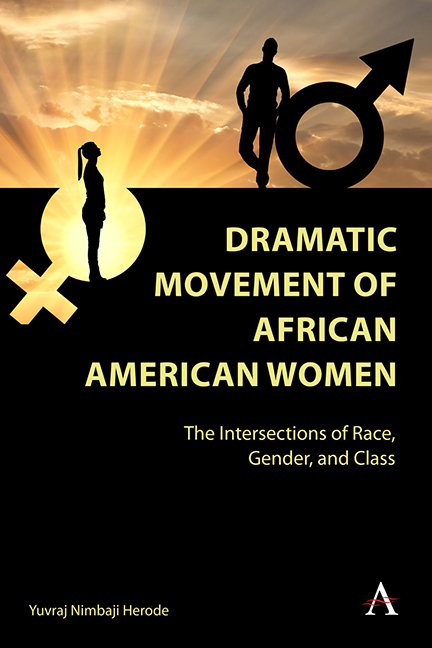Chapter One - Introduction To Dramatic Movement Of African American Women
Published online by Cambridge University Press: 28 February 2024
Summary
General History of African Americans
African Americans are the citizens or residents of the United States who have origins in any of the black populations of Africa. However, the term refers to a racial group, most often to the people whose ancestors have experienced slavery in the United States. The genesis of African Americans was the result of forced detention and transport of Africans from their homeland across the Atlantic Ocean. In the 1400s, European traders plundered the west coast of Africa for slaves. The Portuguese, Dutch, French, and British became active players in the theft and the sale of African human beings for profit. Africans were brought to the United States against their will to work on the plantations owned by the white in the South. The permanent settlement of Africans and the regular slave trade between Africa and the English North American colonies began in 1619. Therefore, the history of black slavery emerged in 1619, when a Dutch man brought twenty Africans in America, and sold them at Jamestown in Virginia.
The first shipload of colonists to Charleston in 1670 brought three enslaved Africans with them and the next year, Sir John Yeamans, an English colonial administrator and planter who served as Governor of Carolina from 1672 to 1674, brought more Africans to South Carolina. Over one lakh Africans were being brought in America each year. Merchant shippers from New York and New England imported Africans as usual commodities for the planters of Maryland, Virginia, and Carolina. Both laws and customs defined all Africans in the colonies as slaves by 1670. The enslaved Africans were gradually employed on the growing rice plantations in South Carolina from the 1690s, because numerous slaves were required to cultivate the plantations. From 1619 to 1700, the African in colonial North America increased from sixty to almost twenty-eight thousand.
During more than three centuries of the slavery era, an estimated fifteen million Africans were captured and shipped to the New World where they were sold into slavery. The majority of slaves went to the plantations in the Caribbean and South America. During 1700–1750, thousands of enslaved Africans were shipped to the American colonies each year. By 1776, the colonies had a slave population of more than five lacks. The majority of these enslaved Africans lived in the south of Maryland.
- Type
- Chapter
- Information
- Dramatic Movement of African American WomenThe Intersections of Race, Gender and Class, pp. 1 - 40Publisher: Anthem PressPrint publication year: 2023



